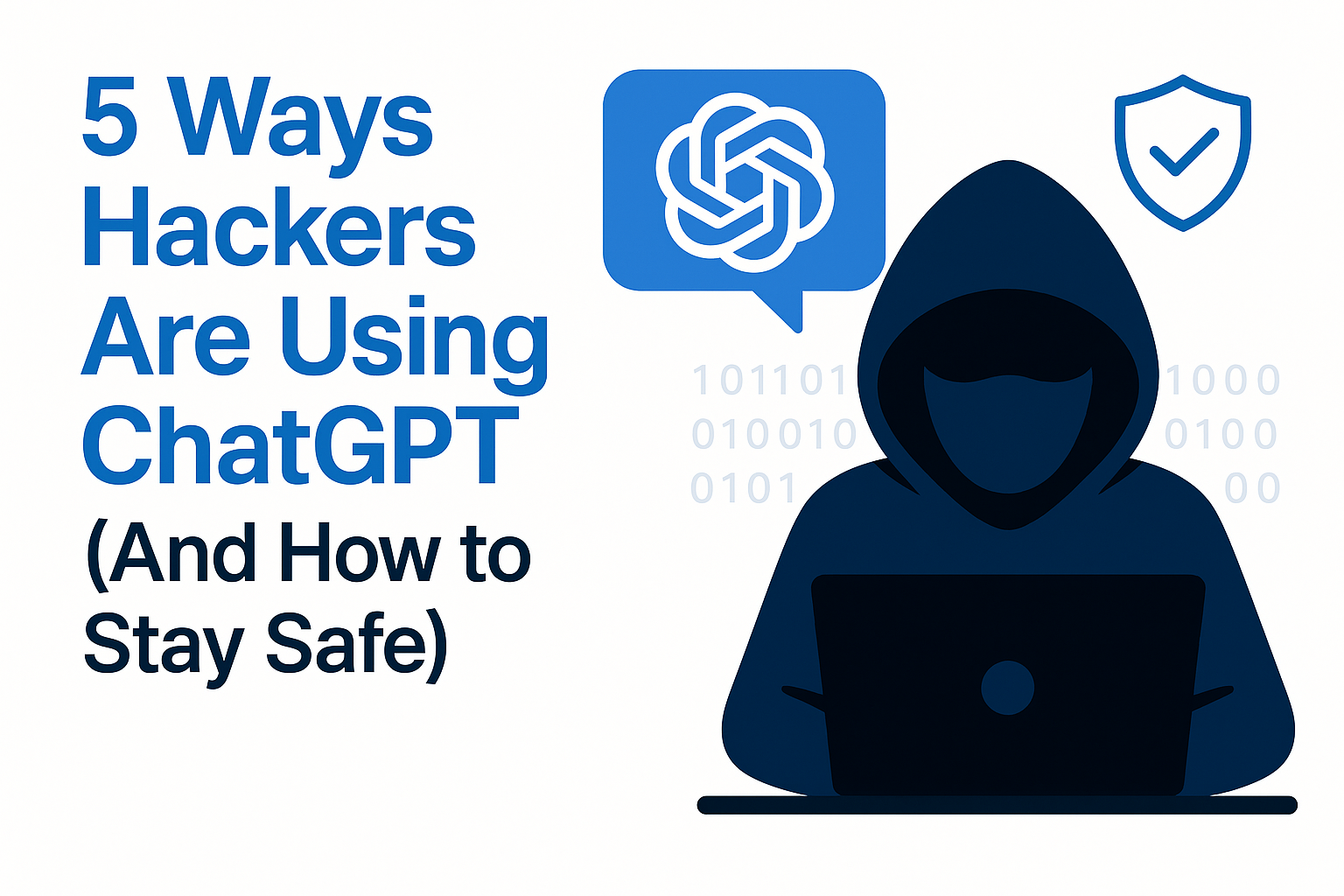The rise of generative AI tools like ChatGPT has transformed how we work, learn, and even communicate. But here’s the darker truth: cybercriminals are also harnessing AI — and they’re using it to scale attacks faster and smarter than ever.
If you’re a student, business owner, or cybersecurity professional, understanding how hackers are exploiting tools like ChatGPT in 2025 isn’t optional — it’s critical. Let’s dive into how attackers are weaponizing AI, and how you can defend yourself.
1. Crafting Convincing Phishing Emails
Hackers used to struggle with grammar and tone — now ChatGPT does it better than most humans. In seconds, attackers can generate:
✅ Polished spear-phishing emails
✅ Fake executive messages
✅ Targeted business email compromise (BEC) drafts
📉 Real-World Impact
According to a SlashNext report, AI-written phishing attacks have increased by 1,265% since late 2023.
🔐 Stay Safe
- Always verify emails, even if they sound “official”
- Implement DMARC, SPF, and DKIM
- Educate employees via cybersecurity awareness training
2. Automating Malware Creation
With just a few prompts, attackers are using AI to help write code for malware, keyloggers, and trojans.
🔍 In underground forums, threat actors boast about using ChatGPT-like tools to refine malicious code that evades detection.
🛡️ Defensive Measures
- Deploy EDR solutions with behavioral analysis
- Regularly patch vulnerable software
- Run frequent malware scans
3. Social Engineering at Scale
AI can simulate conversations, create fake personas, and generate scripts for scammers impersonating IT support, HR, or even police.
⚠️ Scenario:
An attacker mimics your HR department on WhatsApp using AI to get your OTP — and your employee ID.
🧠 Protect Yourself
- Enforce MFA everywhere
- Train teams to recognize manipulation techniques
- Use AI-aware cybersecurity awareness modules in your ethical hacking course
4. Data Poisoning & Model Manipulation
Hackers are now targeting AI models themselves — by feeding them malicious data or manipulating training sets.
💣 In 2025, we’ve already seen attempts to corrupt LLMs to give wrong outputs or leak sensitive information.
🧬 Counterattack
- Use sandboxed environments to test prompts
- Train your team in adversarial AI defense (yes, it’s a thing now)
- Partner with experts for red teaming services
5. Hiding in Plain Sight
AI-generated content helps hackers mimic legitimate websites, code repositories, and even social media accounts — making their scams harder to detect.
Example:
Fake cybersecurity blogs written by ChatGPT are being used to deliver malware through legitimate-looking PDFs or whitepapers.
🛑 Stay Vigilant
- Avoid downloading files from unknown sources
- Verify links, even if shared by known contacts
- Learn to spot spoofed domains via professional training
What This Means for Students & Businesses
Whether you’re training to become an ethical hacker or protecting your business from AI-powered cyberattacks, the rules of the game have changed — and fast.
🔐 At Recon Cyber Security, we train students and professionals to stay ahead of AI-driven threats through:
- Real-world ethical hacking courses in Delhi
- Advanced red teaming and VAPT services
- Corporate cybersecurity training focused on AI-era threats
Final Thoughts
AI isn’t just a tool for innovation — it’s now a double-edged sword. Hackers are using ChatGPT and other AI tools to break in faster, smoother, and more convincingly.
But with the right knowledge and training, you can beat them at their own game.
🔐 Ready to fight AI-powered hackers?
Enroll now in Recon’s ethical hacking training in Delhi or consult us for AI-resilient cybersecurity services.







